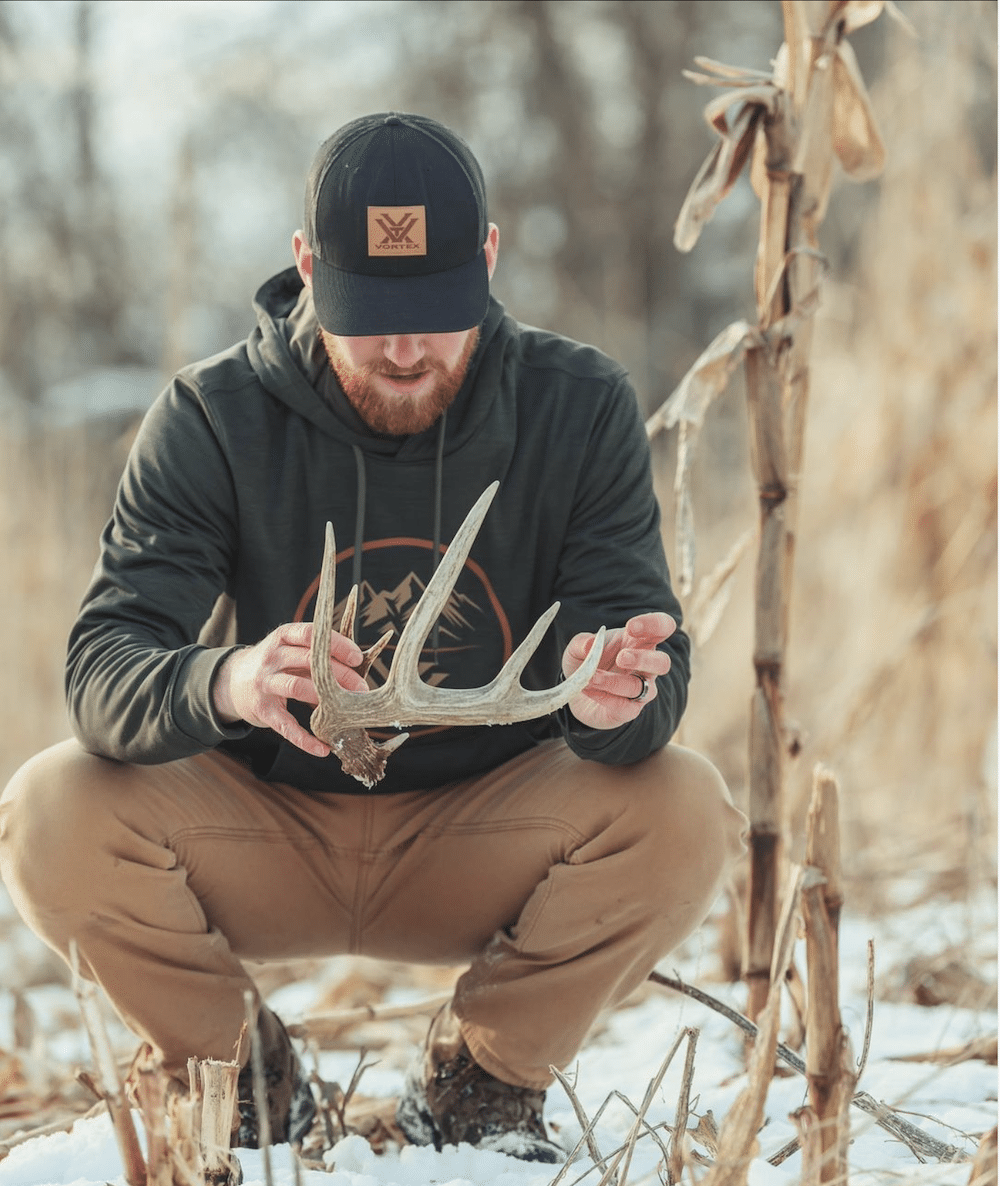Hunting and Fishing News & Blog Articles
Where To Find Sheds
You’ll pick up more shed antlers by searching in high-odds areas. Food sources are the #1 locations to find sheds, according to Dwayne Jones, community manager of Shed Season (shedseason.com), a website that lets shed hunters share their finds.
“Look for the food,” Dwane Jones said. “Regardless of where you live, you’re going to find the bucks sheds where you find the food source.”

Look around crops for sheds. Photo Credit: Shed Season
In Jones’ home state of Indiana, that often means bean fields, standing grain or cover crops like tillage radish. It might be something different in your area, but finding the best food means finding shed antlers, too.
Tip #2
Another tip is to avoid shed hunting too early in the year, particularly during mild winters, when many bucks will carry their antlers into mid-February.
“First and foremost, stay away until the bucks’ antlers are actually on the ground,” Jones said. “If you’re on social media, it seems like everyone else is finding sheds. If you’re running game cameras or monitoring deer at a distance , it’s best to stay out until you actually see that bucks are loosing their antlers. If you’ve found the spot and you’ve got the food, the antlers will be there. I don’t get crazy into it until about the first of March.”
Narrow the Search
Walking large fields or combing big stands of timber can seem tempting, but Jones recommends shed hunters focus on transition areas.
“Walk the edges,” he said. “Check fields where they meet the taller grasses; the edge of the timber, the edge of the CRP. Bucks are creatures of the edge.”

Probably the first bit of advice anyone ever gets about shed hunting is to look where deer jump a fence. Jones laughed at the idea, admitting that he’s never actually found a shed at a fence crossing. Still, he said the concept is sound. The impact from jumping can knock an antler loose, so it makes sense to check crossings near fences, but also where deer jump creeks or ditches. Any obstacle a deer has to go over or under could knock off an antler.
“It’s worth taking the extra steps to check those,” he said.
Pick the Days
Jones is always thinking about shed hunting and even plans shed hunting strategies while he’s deer hunting.
“Pay attention to fall sign while you’re out and about for the upcoming (shed) season,” he added.
The best time to shed hunt is any time you can, but if he had his choice, Jones would pick a cloudy day.
Try to shed hunt on cloudy days. Photo Credit: Shed Season

“Try to focus on overcast days,” he said. “Try to walk with the sun at your back. If it’s sunny out and you have the sun in your face, it can be nearly impossible to see sheds.”
When you do finally pick up an antler, particularly if it’s a nice one, naturally you’ll want to match it up. Sometimes antlers fall off together, but that is rare.
“When I find a shed antler I start walking circles around it,” Jones said. “That has been the best way that I’ve found (to find a matching antler).”
A GPS or Mapping App can aid your search.
“Turn on your tracker and you can go back and see what you’ve covered,” Jones said. “The best thing is it will show you what you did NOT cover. Using a tracker can be a huge help.”
He noted that last year, he matched up a nice set by looking at his tracking device and finding the largest gap between his circles. That’s ultimately where the matching antler was.
Finally, keep a positive attitude.
“Don’t get discouraged,” Jones said. “There’s going to be times where you go days and don’t find a shed, but there could still be one laying just around the next bend or behind the next tree.”
Copyright
© Bowhunting.Net
